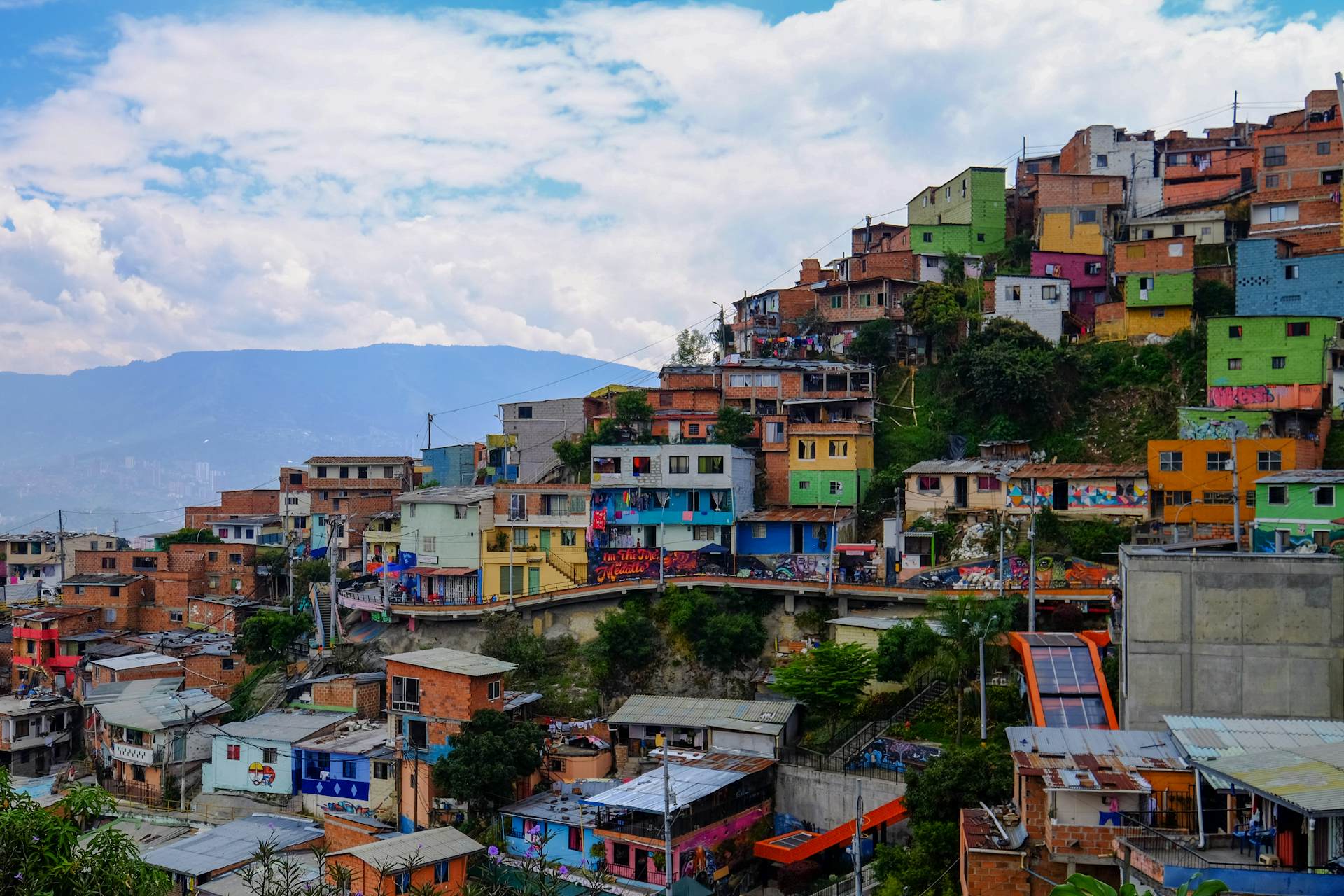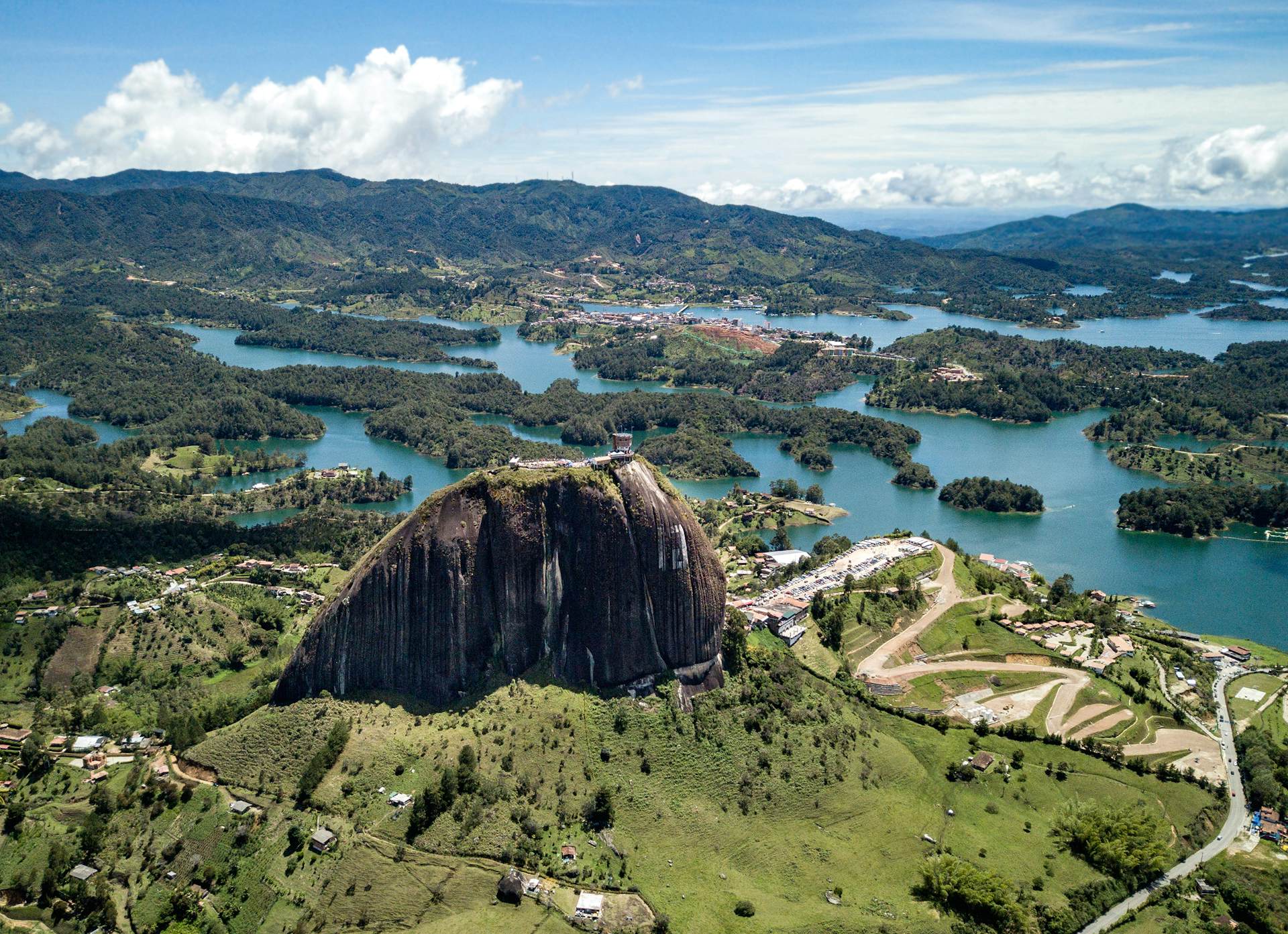A guide to Medellín for digital nomads
4 min readColombia has moved mountains to shake off its narco reputation, and Medellín is at the forefront of this national reinvention, picking up a string of awards for its innovative civic projects and commitment to sustainable urban development.
Colombia’s second city is also blessed with a temperate climate and a valley location that prevents the city from becoming too large and unmanageable. But what makes it such a good destination for remote workers and digital nomads?
Editor’s note: during COVID-19 there are restrictions on travel. Check the latest guidance before departure, and always follow local health advice.
Why should digital nomads choose Medellín?
Many of Medellín’s growing population of digital nomads were lured south from North America by the city’s low cost of living, good weather and solid infrastructure for remote working – from widespread wi-fi to a burgeoning coffee-shop culture. Medellín also has a good support network for new arrivals, with numerous digital nomad groups arranging regular social events. The scene started small in Medellín, but the city has a growing buzz, and it’s fast becoming one of the top nomad stops in the Americas. On top of this, you get culture, hospitable locals and great food and nightlife. Being in a similar time zone to the United States also doesn’t hurt, particularly for nomads with stateside clients. However, to get the best out of living in Medellín, you’ll need to speak good Spanish, something that will also open doors when networking with other entrepreneurs.
Best co-working spaces
For accommodation, co-working space, food, brews and everything else you need under one roof, Selina is a good starting point, with a handy El Poblado location. Another space with a strong community ethos is Siembra Coworking/Ofizen in El Poblado, with regular quizzes, workshops, networking nights and free beer Fridays. Nomads with a strong business focus rate Tinkko, set on the 15th floor of a high-rise in the business district; it’s a great place to work with a view, and there are proper meeting rooms for start-ups that are going places.
Internet speeds
The average download speed via wi-fi is 10 Mbps, which is slower than in some nomad hubs, but faster connections are easy to find. Colombia has also been rolling out 4G coverage for several years, with decent access in urban areas.

Living arrangements
Most nomads opt for rooms in shared apartments or rented apartments, which tends to mean living in the suburbs rather than the busy center. Prices fall if you skip the touristy and central El Poblado neighborhood for quieter areas, such as Ciudad del Rio, Estadio, Floresta and Laureles. If you speak good Spanish, the site Comparto Apto can put you in touch with local landlords with rooms and apartments for rent. For food, graze the streets for bandeja paisa (meat, beans, rice and sides), arepas (stuffed cornflour cakes) and empanadas (Colombian pasties) and get around by local taxis, city buses and the Metro.
Networking
There are several local Facebook groups for digital nomads that are worth joining including Digital Nomads Medellín, Medellín Entrepreneurs Society, and Medellín Digital Nomads.

Things to do when you’re not working
Ride the cable car to Parque Arvi – this forested reserve beyond the city limits has pre-Hispanic ruins and plentiful wildlife; its walking trails (busy at weekends) offer peaceful respite from the city.
Climb Piedra El Peñol – head up 600 steps on this granite massif near Guatapé town (a two-hour bus ride from Medellín) for stunning views over deep blue artificial lakes.
Seek out the perfect cup of coffee – Colombia’s Unesco-listed coffee country is a few hours south of Medellín. Manizales is the gateway to historic coffee-estate haciendas, plantation tours and birding in Río Blanco Reserva Natural.
Pros and cons
As with every travel experience in any destination, there are good bits and bad. Here’s a breakdown of things to consider:
Medellín is great for:
★ Year-round good weather
★ Low cost of living
★ Sharing a timezone with the US
★ Friendly people
★ Cheap public transport
Medellín is not so great for:
★ Traffic
★ Pollution
★ Extending your visa
★ Non-Spanish speakers
★ Petty crime
Practicalities
Climate: Medellín has a warm but moderate climate year round, and the only significant variation is the amount of rain, with more showers than usual from April to May and September to November. Many resident expats live happily without air-conditioning or heating.
Getting there: José María Córdova International Airport, Medellín.
Getting around: Buses travel all over the country and to Colombia’s borders from the two bus stations in Medellín.
Living costs: From US$1100 per month.
LGBT-friendly: Yes.
Pre-departure reading
- Lonely Planet’s Colombia guidebook
- 100 Years of Solitude by Gabriel García Márquez
- Delirio by Laura Restrepo
- The Sound of Things Falling by Juan Gabriel Vásquez
This extract is from Lonely Planet’s Digital Nomad Handbook, available now at Lonely Planet Shop.
You might also like:
<a data-testid="party-in-el-poblado-medellin's-buzziest-neighborhood-link” href=”https://www.lonelyplanet.com/articles/things-to-do-in-el-poblado-medellin”>Party in El Poblado, Medellin’s buzziest neighborhood
<a data-testid="the-10-best-countries-for-working–remotely-according-to-lonely-planet-writers-link” href=”https://www.lonelyplanet.com/articles/best-countries-for-remote-working”>The 10 best countries for working remotely, according to Lonely Planet writers
<a data-testid="everything-you-need-to-consider-before-becoming-a-digital–nomad-link” href=”https://www.lonelyplanet.com/articles/how-to-digital-nomad-remote-work”>Everything you need to consider before becoming a digital nomad



